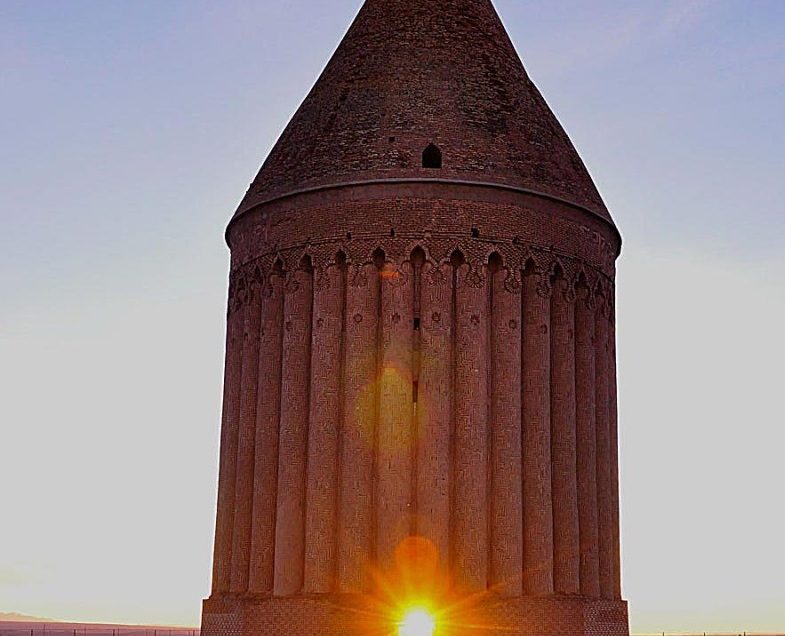Standing some 100 feet tall on a hillock in the Central District of Chenaran County, Razavi Khorasan Province, Iran, this curious cylindrical tower was long assumed to be an ancient tomb, or perhaps a beacon guiding travelers in the area. In fact, it’s likely it was something much more spectacular.
The yellow-brick tower dates to the mid-13th century and was created by one of the greatest Persian scholars of the age, Nasir al-Din Tusi. A polymath, scientist, and astronomer, Tusi is known for helping found the pioneering observatory at Maragheh, Azerbaijan, which, along with the Radkan Tower, collected invaluable information about the stars and sky during a period of remarkable scientific discovery.

The tower has 12 walls corresponding to the 12 months in a year, with 36 columns around the exterior, topped with a conical roof. On the days of the solstice and equinox each year, the sun is aligned perfectly to shine through the doors on opposite sides of the tower. It’s also believed the structure can determine the beginning of the four seasons, leap years, and the start of Nowruz, the Iranian New Year.

Source: https://www.lonelyplanet.com/iran/radkan/attractions/radkan-tower/a/poi-sig/1444927/1315195
https://www.atlasobscura.com/places/radkan-tower


